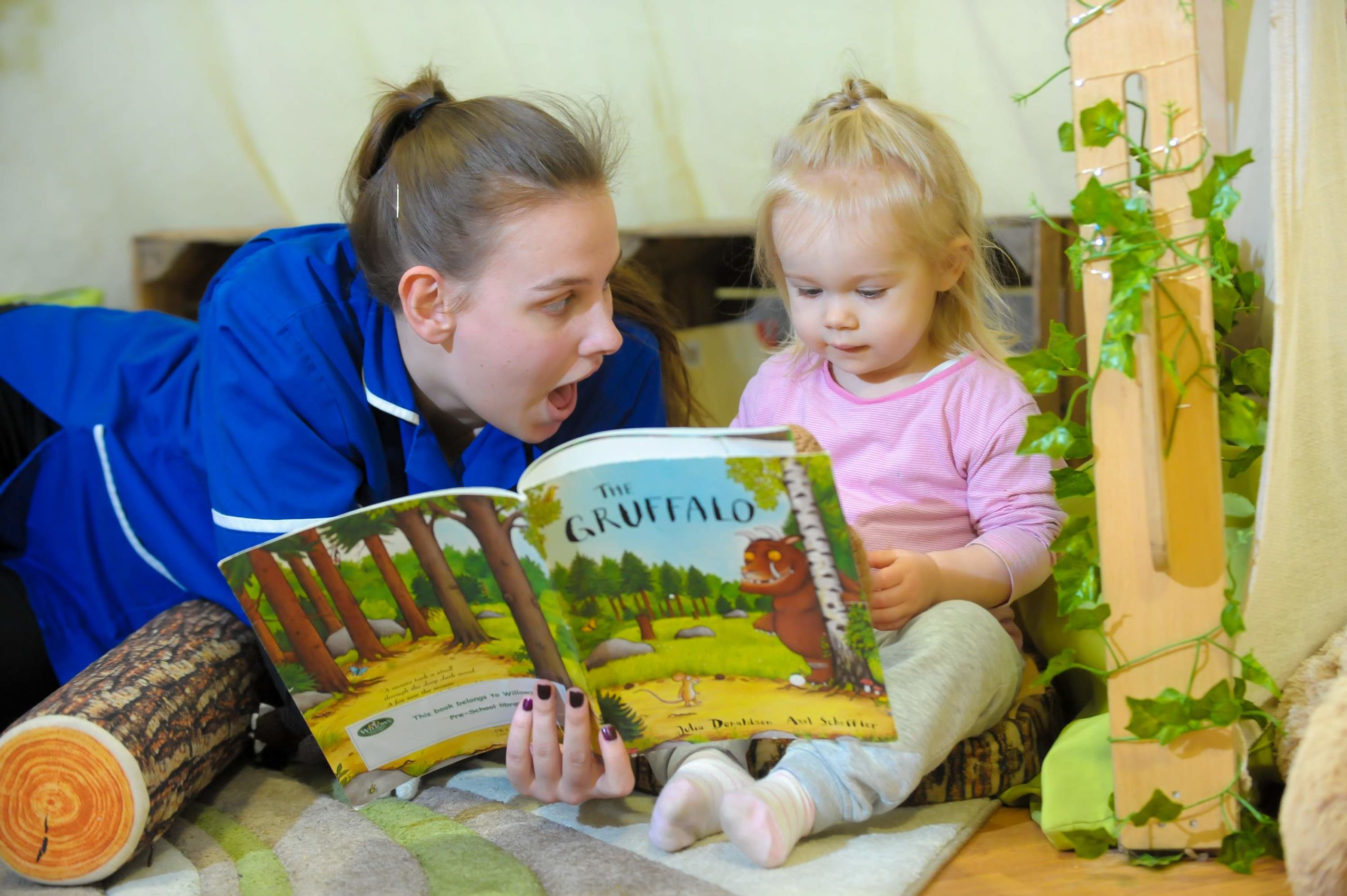With many of us having busy ‘on the go’ lifestyles, parents/carers often find it difficult to spend quality 1 on 1 time with their children. Having a designated ‘story time’ prior to your child going to bed is a great way to enjoy some quality time together, whilst your child also benefits from exposure to reading and literacy skills.
You can start reading to children at any age, however, it is worth remembering Toddlers and Pre-Schoolers usually only have a timespan of around 10-12 minutes. If storytime goes on for too long at bedtime, children will become over stimulated and you may find it hard to settle them.
To ensure you make the most of story time, we’ve suggests 6 ways to make story time fun, engaging and memorable.
Finding books your child will enjoy
Children all have a favourite sport, toy or animal. Try to find books that have similarities to your child’s interest. For example, if your child has an interest in dinosaurs, maybe look for some books which have a story around dinosaurs.
In the Nursery and Pre-School, we read children a mix of the old and the new. Many of the classical stories have amazing storylines that can really fire your child’s imagination. Or you could consider reading some Nursery Rhymes, which can be very engaging.
Discuss the book cover
Before diving straight into the book, maybe take a couple of minutes to discuss what the  book cover is showing. Discuss the colours, pictures and shapes that have been used. This will not only encourage your child’s creativity but can also help with their vocabulary.
book cover is showing. Discuss the colours, pictures and shapes that have been used. This will not only encourage your child’s creativity but can also help with their vocabulary.
You could also discuss what they think will happen in the story and look at the different people who helped put together the book, as again this will help with their language and understanding of how the book was made.
Put a show on when reading the book
It is important your child sees this time together as special and fun.
When reading the story, try to be expressive. Use facial expressions and voice variations based on the different characters to bring the story to life for your child.
As your child’s language skills start to develop, you could even suggest that they help to read a page or two of the story.
Ask your children questions
Story time should be interactive, and we’d recommend you create a two-way dialogue. During the story think about what questions you can ask your child, so they understand the story.
Common questions to ask include “What would you do in that situation?”, “Why do you think he or she behaved in that way?”, “How does that make you feel?” These are all good questions to help build emotional intelligence and help with overall language skills.
Keep learning beyond the book
Think about taking the topic of the book further. Getting imaginative – you could draw some pictures of their favourite character from the book? Or maybe even make up your own sequel to the book.
You could also extend this into other areas, such as baking biscuits in the shape of the character or finding out about a place mentioned in the story.
Take pictures of story time
Ultimately, story time is a time for making happy memories. Maybe think about taking a picture together of each book you read and put in a memory box.
When your child has grown up you can look back together at some of the stories you have read over the years and how their tastes have changed.
Story time will ultimately help to understand your child’s interests and help to develop their reading and literacy skills. Furthermore, taking the above into consideration, this should help to create a special story time experience between your child and yourself, creating special memories that can last forever.
Further Reading
https://www.penguin.co.uk/articles/children/2018/nov/ways-to-keep-storytime-fun-from-the-booktrust.html
https://pathways.org/mother-goose-dr-seuss-7-ideas-make-story-time-fun/
Back to Articles






































